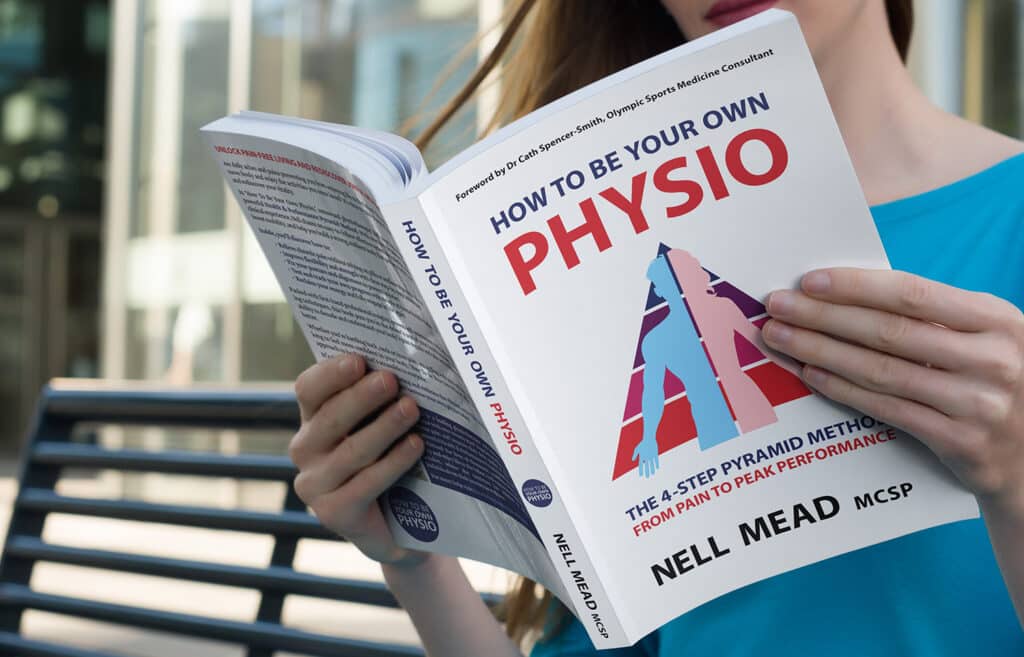In the last post, my patient, A, described being diagnosed with a uterine fibroid and explained how she planned her surgery. This is what happened when she got to hospital…
The day of my surgery
Tech Man offers to drive me to the hospital, but what I really want and need is a peaceful walk as the sun is rising. It is sinking in that I am having major surgery, but I try not to think about it. I register at reception, I take the lift to my room, and everything is prepared. My anti-embolism and anti-slip socks as well as my patient gown are neatly folded on my bed. Then Layla, the pharmacist, comes to go through my medical history and check if I am on any medication or have any allergies.
Mr Pisal in scrubs
Mr Pisal walks in dressed in his blue surgery scrubs, looking calm and confident. We go through the consent form, and he asks me if I have any questions.
Our chat reminds me of one of those one-to-one moments I used to have with my coach just before I’d go out to compete. Surgery is a bit like sport. You prepare and train to be in top form on that specific day, and then magic really can happen – since you’ve done your preparation. I am surprised how well I’m coping without breakfast.
Mr Anaesthetist
Then, my anaesthetist, Dr Ahmad Ziyad, comes for a brief visit to go over a few medical questions. It’s the first time I’m seeing him, and he tells me he’s read my patient statement and had a look at my CPET test. It’s reassuring when he tells me that I will probably recover quickly given my fitness level.
Ready for theatre
It’s 2 pm, and the nurse collects me from my room to go down to the theatre. She hands me a lovely warm pre-heated pink blanket before we enter the anaesthetic room. It’s quite snug and cosy, and I feel instantly relaxed. And then routine takes over, and everyone knows exactly what to do. I get my ID bracelets, which have my name and hospital ID on them and then Dr Ziyad prepares me for the general anaesthetic. He finds my vein and I don’t feel anything. I’m gone, and I don’t have any memory of what happens over the next three hours.
Waking up
The next thing I remember is waking up like any other morning. I’m not confused. I don’t feel groggy. My head is clear, and I expect the assistant to tell me that we’re ready for theatre, but instead, he tells me that I’ve had a successful surgery. I’m not in pain. I’m comfortable and carefree. I know I have been in safe hands. I can’t explain why, but I can feel that my body has been handled with the utmost care, respect and dignity. I also notice that my legs are fitted with mechanical compression boots to prevent any deep vein thrombosis. The noise and massaging movement feel monotonous, soothing and calming.
Finally, something to eat
Back in my room, I am finally allowed to have something to eat. It’s now been 22 hours since I’ve last eaten, and I am hungry. I keep it light. I stick to some lentil soup and steamed vegetables, a cup of tea and some biscuits.
I wiggle my toes, moving them back and forth to get some movement going. I roll my shoulders, and I’m glad I don’t have any pain in my shoulders. They use gas to inflate the abdomen, and this can lead to shoulder pain because the gas can irritate the diaphragm, which is used to breathe.
Check-up with Mr Pisal
The following morning, after my surgery, my breakfast arrives at 7 am. Mr Pisal comes at 8 am to check on me. He’s clearly pleased and tells me that everything went to plan. Another nurse removes my drip and catheter. I know I have to be able to empty my bladder fully three times before the nurses will even consider discharging me. So, I am trying to relax and get into a routine of drinking plenty of fluids and waiting.
My first physio and getting out of bed
At 10 am, I have my first physio with Johnathan. He finally relieves me from these compression boots, which are starting to feel a little restrictive. He’s come to show me how to get out of bed safely. I don’t know how careful I have to be. Johnathan is very encouraging, and it’s not long before I am sitting on the edge of my bed and ready to stand up for the first time after my surgery. Once I have passed the getting out of bed test, we take a walk up and down the corridors, and I even tackle my first set of stairs.
The importance of balance
I’m also very glad I’ve been doing Nell’s balance exercises. We don’t realise how important balance is to keep us steady on our feet. The World Health Organization estimates that 684,000 fatal falls occur each year, making falling the second leading cause of unintentional injury death. Balance is easy to train, but if you don’t use it, you lose it, and you don’t even notice that you’ve lost it until you’ve had surgery and need your balance to help you feel safe. Balance gives you independence.
Shut-down repair mode
Mr Pisal did tell me I would feel tired after surgery as my body undergoes repair and recovery. There’s some intense activity happening at the cellular level as my abdomen heals, but it is a different kind of tiredness. It almost feels like my body goes into a shut-down deep repair mode for two hours while an army of soldiers is busy inside getting the right nutrients to the right places.
Comfy loungewear
I notice that my abdomen is still a bit swollen, and there is no way that I will fit into my jeans. This is all new to me. So, I text Tech Man a link to The White Company, as they have really soft and comfy joggers that won’t feel tight around my tummy. Their loungewear section is just perfect. Marylebone High Street is literally around the corner, so I ask him to pop in before he comes to collect me tomorrow.
Wednesday morning and going home
It’s Wednesday morning; I wake up and notice I am not in pain even though I didn’t take any painkillers. I have toast and butter for breakfast. Then, Johnathan walks in to check on me, but he can tell that I’ve been walking around and don’t really need his help anymore. He hands me a flyer with pelvic floor exercises, and they really are very basic exercises. The Pelvic Obstetric & Gynaecological Physiotherapy Association (POGP) also publishes a useful leaflet, Fit following Surgery, which shows you how to get out of bed safely and go to the toilet after you’ve had your catheter removed. It also gives you a list of pelvic floor exercises that are very easy to follow. There’s also Squeezy, an app you can download that provides pelvic health information and pelvic floor exercises.
You don’t look like you had surgery
Martina, the nurse who welcomed me on my first day, pays me a visit. She’s surprised to see me sitting in my chair practising the deep breathing exercises that Nell gave me. She is confident Mr Pisal will discharge me today and tells me: ‘You don’t look like you had major surgery.’
It’s my third day, and I am starting to get bored, so I explore the hydro pool one floor above. Nell recommended a few sessions with London Hydrotherapy, and I am curious about what it entails.
I’m discharged
Another knock on the door. Mr Pisal has come to check on me. He takes a look at the dressing, and it all looks fine, so he’s happy to discharge me. He shows me a video clip on his mobile. It’s the first time I’m seeing what laparoscopic surgery looks like and the level of skill involved. I’m fascinated as I watch how a knife cuts into the uterus without blood spilling everywhere. It looks surprisingly neat.
Blood pressure can be alarming
Before I can go home, the nurse changes my dressing and does one last saline flush to push any residual medication or fluid through the cannula before she removes it. There’s another blood pressure check, which alarms her: ‘Wow, 160… do you have high blood pressure?’ I don’t think so, but over the last two days my blood pressure readings have swung between 120 and 160, and my pulse has dropped as low as 47, which set off the alarm.
To be on the safe side, I decide that I will do my own blood pressure check. It would be good to know what my numbers really are. You can buy a blood pressure monitor or pulse oximeter from John Bell & Croyden. The charity Blood Pressure UK explains what the numbers mean and how you measure blood pressure correctly. They also tell you where you can have your blood pressure checked for free. Some Boots stores, for example, offer free checks. And I am glad to report that my blood pressure is a healthy 116 over 78.
A bag full of painkillers
The final thing I sign is my discharge form, and then Leyla, my pharmacist, knocks on the door to hand me my bag of medications to take home. These include painkillers, antibiotics, laxatives, more painkillers… it’s a huge bag, and I can’t see myself taking any of these unless I absolutely need to. Antibiotics can’t be avoided, but as for the rest, I’ll see how it goes.
Stylish pyjamas
It’s late afternoon now, and Tech Man arrives. He proudly presents me with his Boss jogging trousers. I just look at the waistband and know they are too uncomfortable. Never mind. How lucky that I packed my pyjamas. They look surprisingly stylish: loose fitting and a flattering soft grey with a signature satin stripe down the leg. So, off we go in my pyjama bottoms with my bag of meds and Tech Man by my side. I’m so happy.







